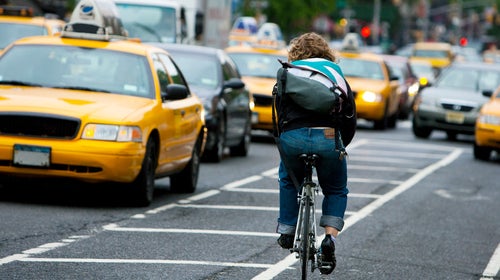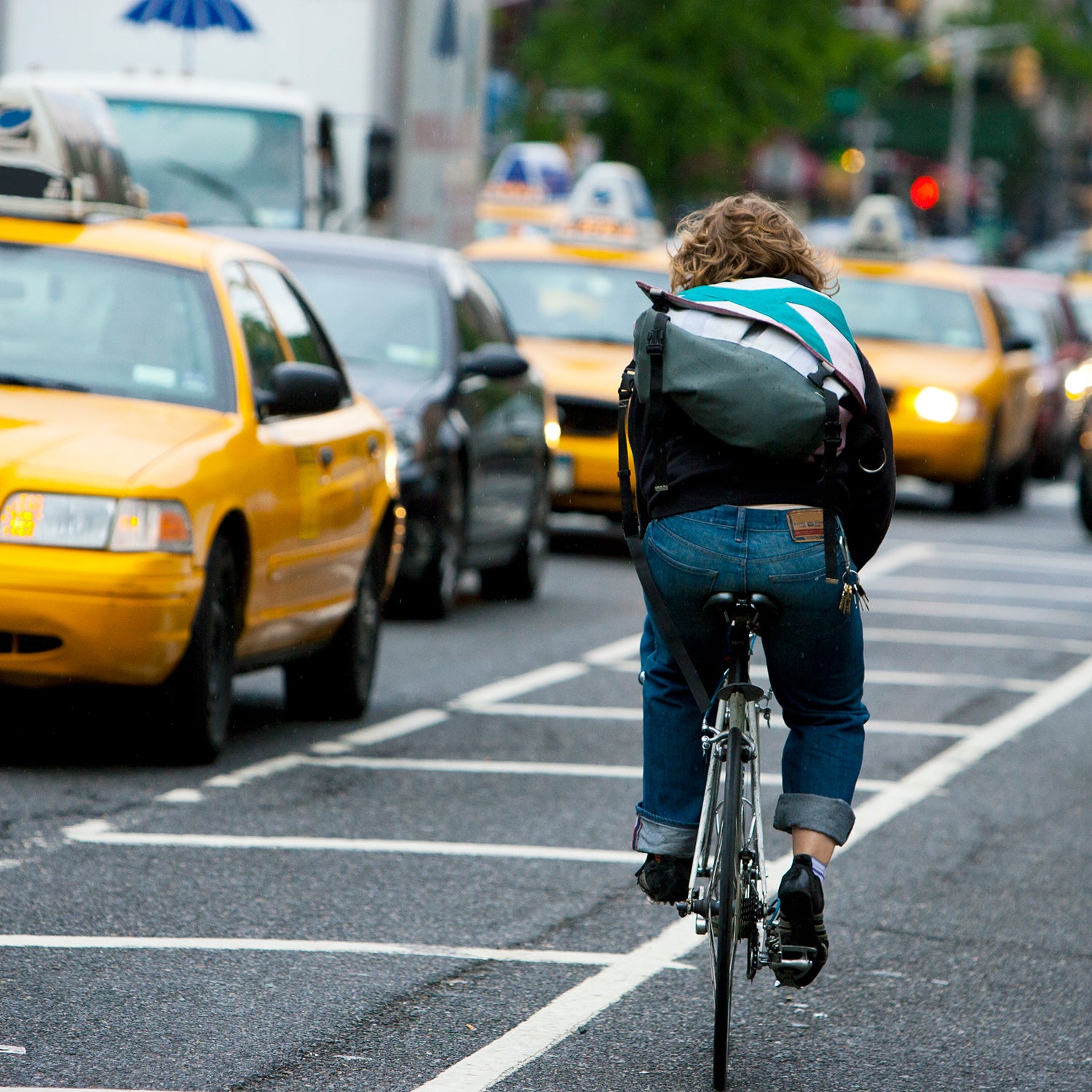On March 8, as America began to contemplate the looming specter of the coronavirus in earnest, New York City mayor Bill de Blasio tweeted:
New Yorkers laughed off the bit about the subway—until social distancing became a way of life, there was no such thing as a New York City subway train that wasn’t packed during rush hour—but they took his bike-to-work advice more seriously. Days later, the New York City Department of Transportation reported a 50 percent surge in cycling over the East River bridges compared to the same time last year. Citi Bike also saw a 60 percent increase in ridership. Certainly, the warm weather and the extra hour of daylight from changing the clocks that weekend contributed to the bumper crop of cyclists, but plenty of people also cited coronavirus as the reason they chose to ride. One rider told the New York Post: “I feel better taking the bike… There are fewer hands touching these handlebars than the subway poles.”
This is by no means the first time people in major cities have turned to the bicycle in a crisis. When Hurricane Sandy knocked out the subway in 2012 and caused gas rationing, people rode bicycles. When the blackout of 2003 plunged New York City and huge swaths of the northeast into darkness, halting trains and causing mass gridlock, commuters scrambled for rental bikes. The bicycle has been a clutch player during transit strikes in New York, Philadelphia, London, and Paris. And on a personal note, during the chaos, confusion, and horror of 9/11, the bicycle got me where I needed to go. When the shit hits the fan, the bicycle is a powerful contingency plan.
But like a fire extinguisher or a first aid kit or anything else that can be useful in an emergency, lots of people take bicycles for granted, consigning them to some out-of-the-way spot in their homes and forgetting about them—if they even have them at all. When things are running smoothly there’s also the common misconception that the bicycle is not a practical mode of transportation: we’re told over and over again by the anti-bike-lane set that they’re no good in bad weather, or they’re only for the young and fit, or that they’re useless for carrying stuff which is why we all need to drive SUVs. Sure, all of this is demonstrably untrue—winter weather doesn’t stop people in Copenhagen, age doesn’t stop the Dutch, and you can easily carry your groceries with a cargo bike—but instead, pundits and blowhards reflexively dismiss the idea of riding a bike for anything other than recreation or fitness, and continue to characterize dedicated bicycle infrastructure as an indulgence and not a necessity.
Then there’s the most ironic criticism of bike lanes and other safety-oriented road designs: that they hinder emergency response. This is a myth that has been debunked time and time again. It’s personal cars that are the real liability in this regard; in New York City, the sight and sound of emergency vehicles stuck in motor vehicle traffic is so commonplace that people simply tune it out—there are so many videos of it happening that it’s practically its own film genre. I’ve never seen a fire engine stopped by a bicyclist, but I have seen one stuck behind a Fresh Direct truck.
In a crisis we see how backward this sort of reasoning is, because the fact is that, short of walking, there’s no more dependable mode of transportation than the bicycle. Sure, if it rains while you’re on your bike you’ll get wet, and pedaling through a blizzard might be a tall order, but you don’t know smugness until you’ve cycled past a gas line or schlepped a bunch of supplies to hurricane victims by cargo bike. It’s situations like these that expose the vulnerability of public transportation to disruption, and the sheer bovine unwieldiness of cars. And that’s not even addressing how indispensable a bicycle will be for the zombie apocalypse.
None of this is to say the bicycle is ever going to supplant public transit in a major city on a day-to-day basis, nor is it to imply that, should some calamity befall me, I’d prefer to be picked up in a Dutch cargo bike than an ambulance. However, the bicycle is a vital component in the fabric of any robust transportation system under any circumstances, and when another component of that system is strained or fails, the bicycle greatly enhances that system’s resiliency. Alas, now it seems other countries are going in the other direction: Madrid is suspending its bike share system, and Spain and Italy are banning leisure cycling in response to concerns about the virus (though as of now they’re still permitting cycling for essential transportation).
Amid this virus-related cycling boom, advocates in New York have been calling on the city to make additional provisions for people on bikes. Meanwhile, the city has limited bars and restaurants to take-out and delivery only. This will place even more pressure on New York City’s food delivery people who, as advocate Do Jun Lee points out, have already been suffering under de Blasio’s war on e-bikes and will now be sustaining many of New York City’s small businesses. In recognition of this, the mayor has ordered the NYPD to suspend e-bike enforcement.
As this pandemic compels us to consider the shortcomings of our healthcare system, the fragility of the economy, and our need for affordable healthcare, we should also give the bicycle its due. Even when you neglect it, it’s always there for you—all it ever needs is a little air in the tires.


